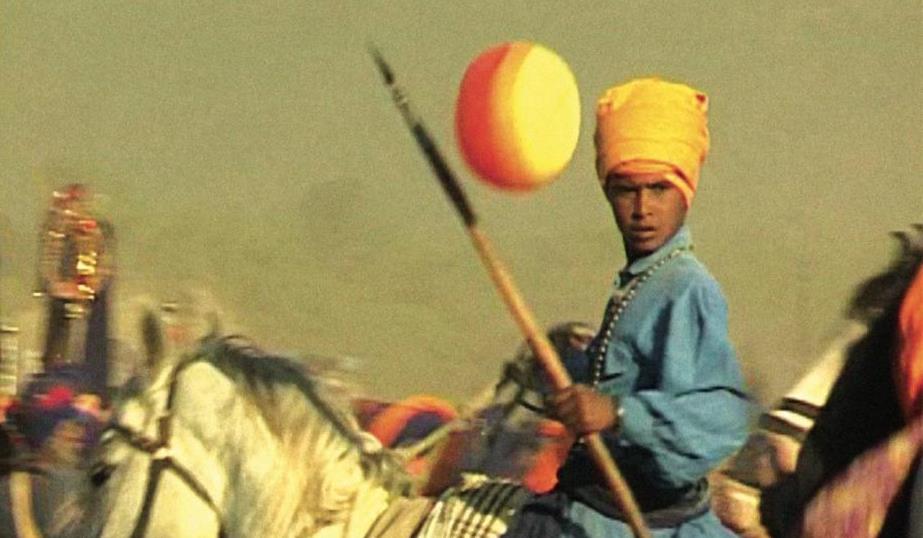
Disputed Territories, Uncertain Positions
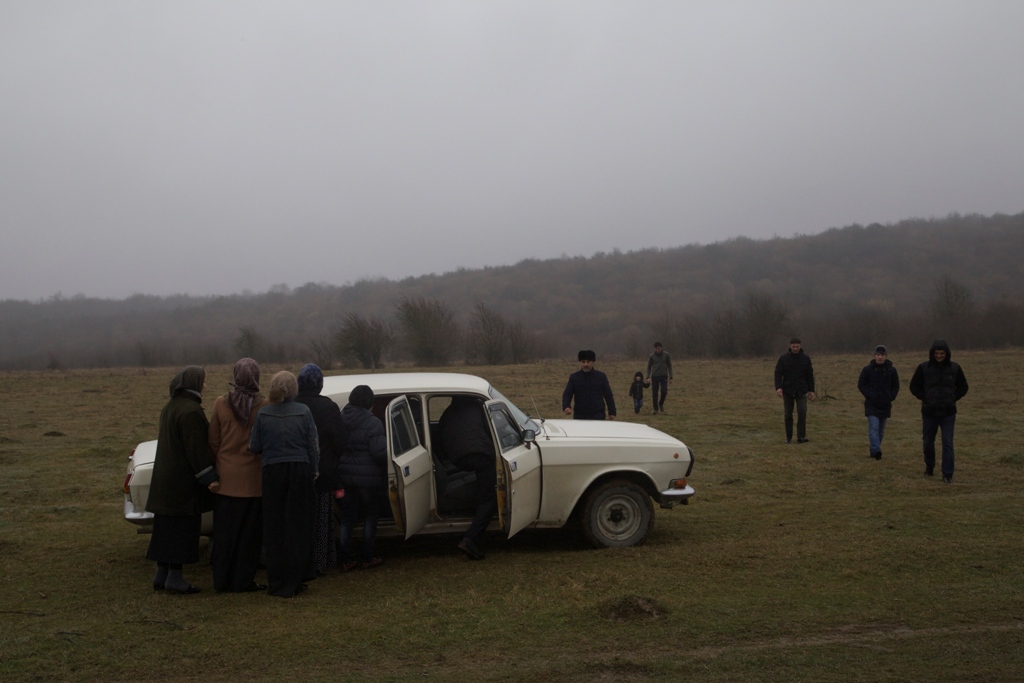
The Moscow exhibition Our Land / Alien Territory raises political questions in an indirect way. It makes you wonder about the standpoint of the curator and the artists.
The whole world and also the art community cannot avoid speaking about Crimea and West Ukraine. The topic has already been presented in several art projects in many different ways because even formulating the problem is a problem. Is it: War of Russia against Ukraine, War between Russia and Ukraine, Covert War, Hybrid War, Civil War, Conflict in Donbass, The Situation etc. – all these phrases return in the texts for all kinds of exhibitions. And every time curators have to explain where they stand themselves.
Our Land / Alien Territory was opened in Moscow Manege just after another ambiguous exhibition The Sculptures We Do Not See (in the very same space) which was attacked and vandalized by Orthodox extremists and caused vigorous discussion in Russian society. So the new show drew attention of the audience in advance, and its title Our Land / Alien Territory alludes to a very current issue. Started with the mentioning of ‘Crimea’s accession into Russia’ in the opening word in catalogue, Yulia Aksenova, the curator of the exhibition, says in very neutral words that Russians (and not only them) became hostages of geopolitical games. She does not say anything about her personal story and the misfortunes she had to face in the professional field because of annexation of Crimea and subsequent Russian military intervention in Ukraine. I can fill that gap: in March of 2014 when Putin ‘granted the permission’ of the Federation Council to use Russian military force in Ukraine three Ukrainian artists (Nikita Kadan, Lada Nakonechna, Mykola Ridnyi) canceled their upcoming exhibition in The Garage Museum. ‘I am sorry that we have to do that but it’s impossible to do it in any other way’, Kadan wrote on Facebook. Aksenova should have been the curator of this show. It became a starting point for the exhibition she made in Manege.
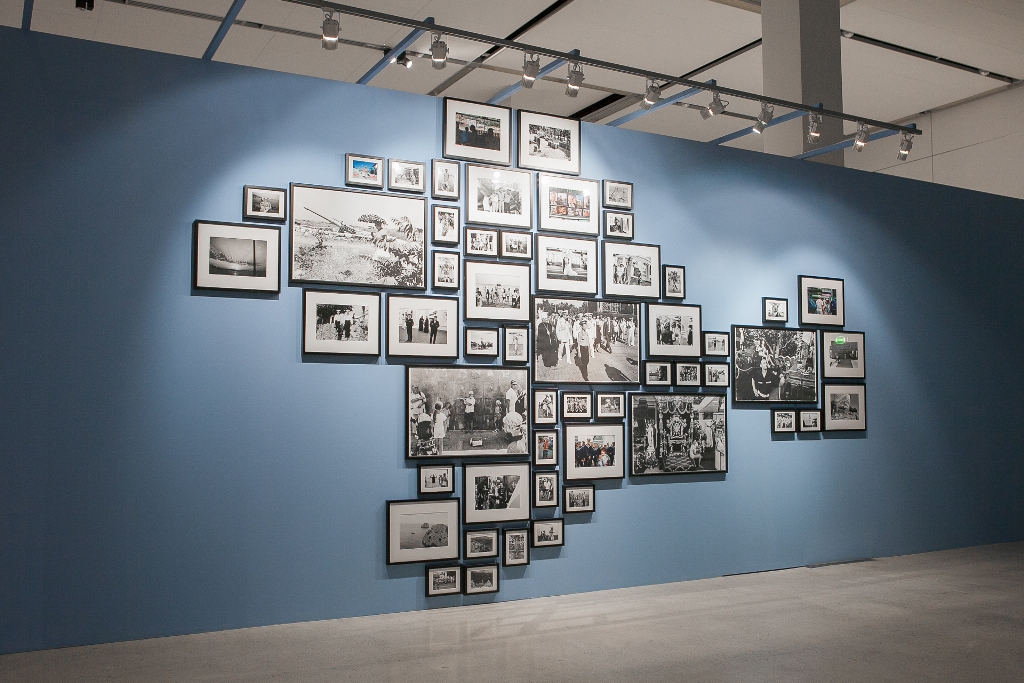
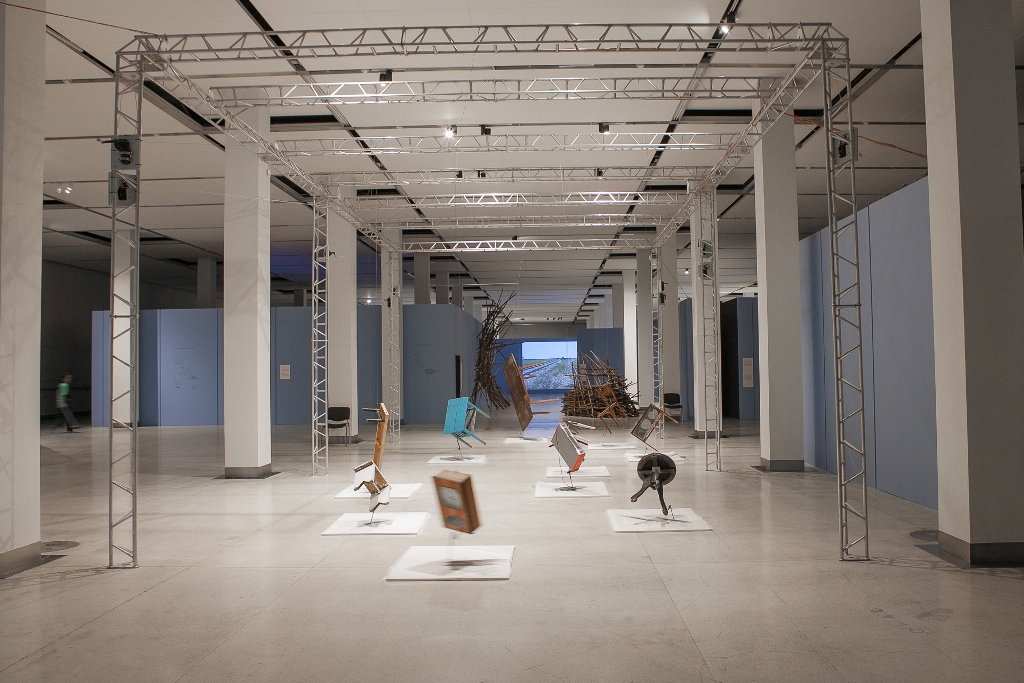
There are more than 30 artists participating in the current show and they all are talking about disputed territories. We see a documentary installation by the Vietnamese artist Tiffany Chung who tells about some episodes of the Vietnam war. Shilpa Gupta asked a hundred ordinary Indians ‘to draw the map of their country by memory’ and some of them added parts of neighbor countries, sometimes even whole countries like Sri Lanka, to India. Yerbossyn Meldibekov, an artist from Kazakhstan, shows the ‘war of names’: situated on the border of Kyrgyzstan and Tajikistan the mountain which was called Lenin Peak in Soviet times now was given different names related to own national traditions of both sides and it caused information warfare. In the video of Aslan Gaisumov who lived through the war in Chechnya, we can see a very tragic image of every fight for territory – group of 21 refugees is trying to get into an old car. Another video made by Maja Bajevic who was born in Sarajevo is about five women, refugees from genocide in Srebrenica in 1995 – they embroidered patterns of the scaffolding on the National Gallery of Bosnia and Herzegovina which was under reconstruction that time. ‘Handcraft is a revival of home and a marking of space in a typically female manner, something that refugees do when they arrive in a foreign place’, Bajevic explains.
Moscow art critic Valentin Diakonov pointed in his review on that Our Land / Alien Territory works and looks great but only ‘as a digest’. Indeed, the show tells us lots of artists narratives about disputed territories but we hardly can find its own narrative and position. A week and a half before the opening of Our Land / Alien Territory I visited an antiwar exhibition and symposium in Cologne which was made by Russian and Ukrainian artists and curators. For sure they took position in the debate but they could speak without any (auto)censorship. All these events were interconnected as a Autumn program of Academy of Arts of the World – Pluriversale III . Suspecting what would happen on the exhibition to be open soon in Moscow I asked director of the Academy Ekaterina Degot about the situation when a curator has no possibility to talk more clearly, otherwise the show won’t be opened. She said that she symphathized curators working with the topic of war between Russia and Ukraine, annexation of Crimea and so on but she also added that the tradition of Modernist and Conceptual art in Russia which expressed itself in an Aesopian language continued in new forms. It’s a survival skill. This is why she prefers art that she calls Realist which contains documentation of reality as well as artistic opinion.
But there is an other position as well which only shows facts, for example evidences of Russian military presence on Ukrainian territory. Already mentioned artist Nikita Kadan made an installation for National Museum of History of Ukraine as a part of The School of Kyiv – lots of weapons and other objects from the area of war – and he said that he made it not as an artist but as a regular museum worker, without any additional artistic presence. And this is also Realist position, very utopian but definitely having its right to be.
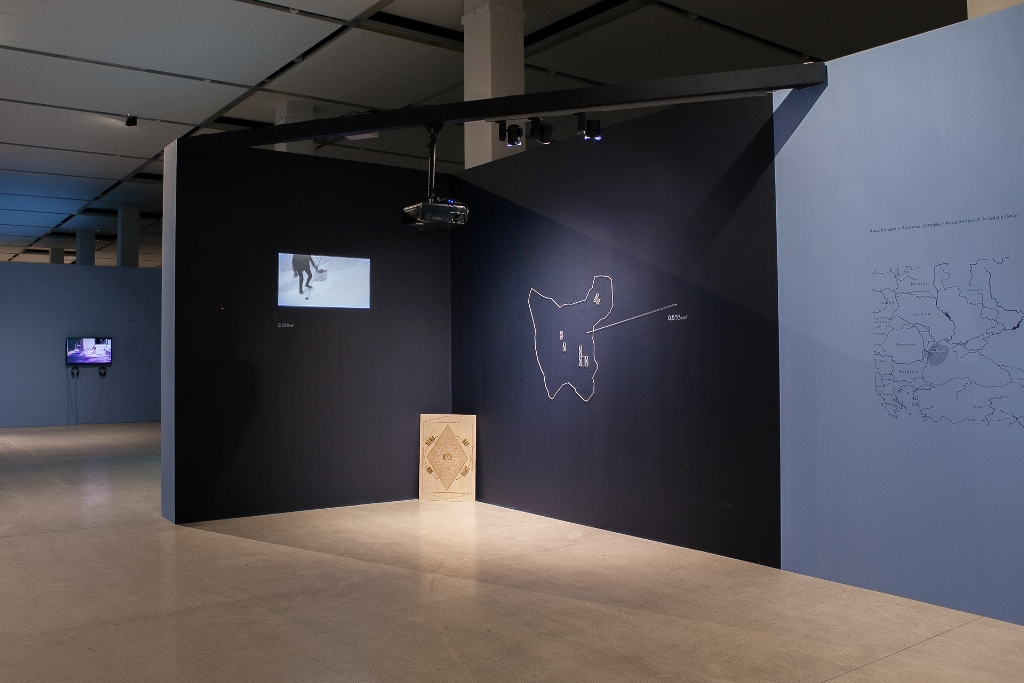

The covert war between Russia and Ukraine and annexation of Crimea are definitely placed in the center of the show Our Land / Alien Territory. But the artists don’t speak directly, they had to use some kind of parables. There are two huge installations – one by Russain art group Urban Fauna Lab (Anastasia Potemkina, Alexey Buldakov) and another by American artist Elizabeth Hoak-Doering. Urban Fauna Lab made a construction of hogweed shafts. This plant is extremely aggressive, spreading as far as people let it despite the fact it’s almost unstoppable. Artists take hogweed and its expansion – over a million hectars of land in Russia – as an image of new type of conflicts because it was cultivated with some reason like in hybrid war and of new special forces when one is not really certain what people he is dealing with. Talking about that green warfare, artists use word ‘annexation’ and mention struggle for Promised Land so it can be read as a common narrative about Ukraine, Syria, Iraq, Afganistan, North Caucasus or any other place.
Hoak-Doering repeats her project she already made in Cyprus – which as you know is also a disputed territory. She took objects, especially furniture, from front zones – now it was ‘things-witnesses’ from Donetsk. They pass by as spectators and produce drawings – their story about the war. One can imagine that every of these stories was literally abstract. ‘I’m really interested in human beings and political movements, but I have no opinion on this exact conflict, – said the artist to Moscow magazine Afisha. She repeated it on an Ukrainian TV channel: Do I have a political position on this? No, because I’m more interested in the political as an aspect of humanity.’
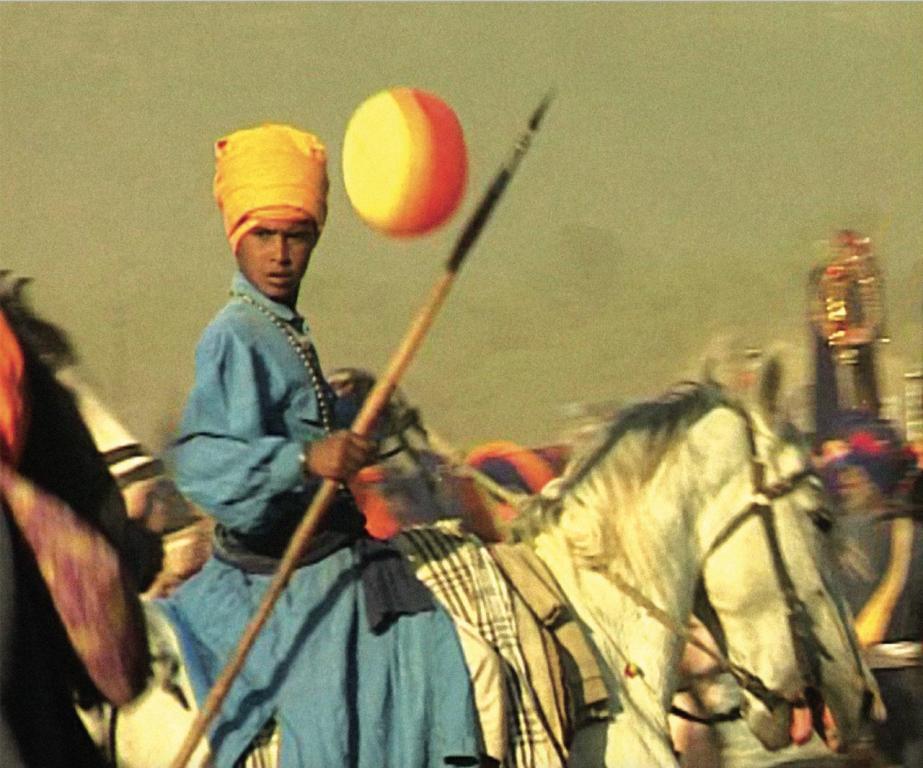
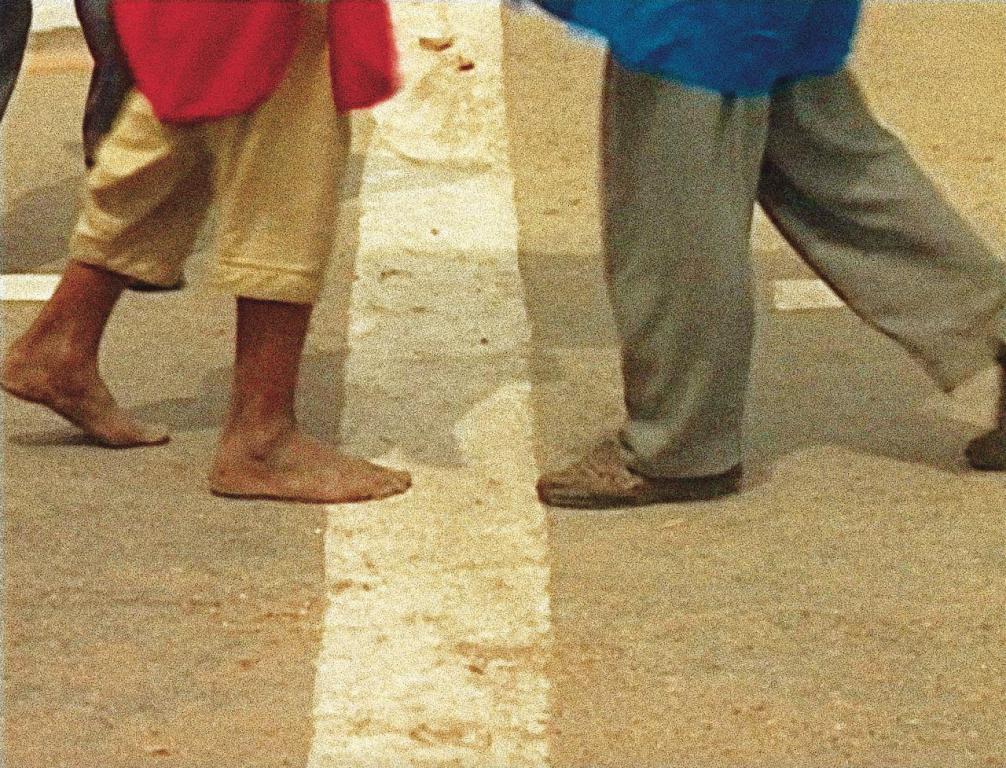
Another two artworks on this most actual topic were done by the Russian photographer Igor Mukhin and Sergey Bratkov, the only Ukrainian artist participating the exhibition. Bratkov has lived in Moscow for a long time and rarely goes to Ukraine. But his new video was made in Ukraine, 40 km away from the frontline between Ukrainian army and forces of separatist republics supported by Russia. For the artist, the frontline is everythere: two persons in his video are playing war game. They are kidding but it doesn’t cancel the fact that the war is near. Mukhin took pictures of Crimea after the annexation: there are mariners, soldiers, tourists, Orthodox priests, t-shorts with Putin and war monuments. All the installation of photos made in a shape of Crimea. One of the photos shows the young street musician who collecting money for support of Donetsk whatever it means in reality – aid for refugees and people harmed by war or for buying weapons and other stuff for warfare. Inspite of the thoughts of this boy most likely these are money for war.
Some of artworks are really brilliant and very certain about what the artist wants to say but unfortunately the whole exhibition is not so precise maybe because of the curator’s approach maybe because of the context and the atmosphere of fear and censorship in Russia.

Our Land/Alien Territiry
Central Manege, Moscow
16.9 t/m 4.10.2015,
Sergey Guskov


